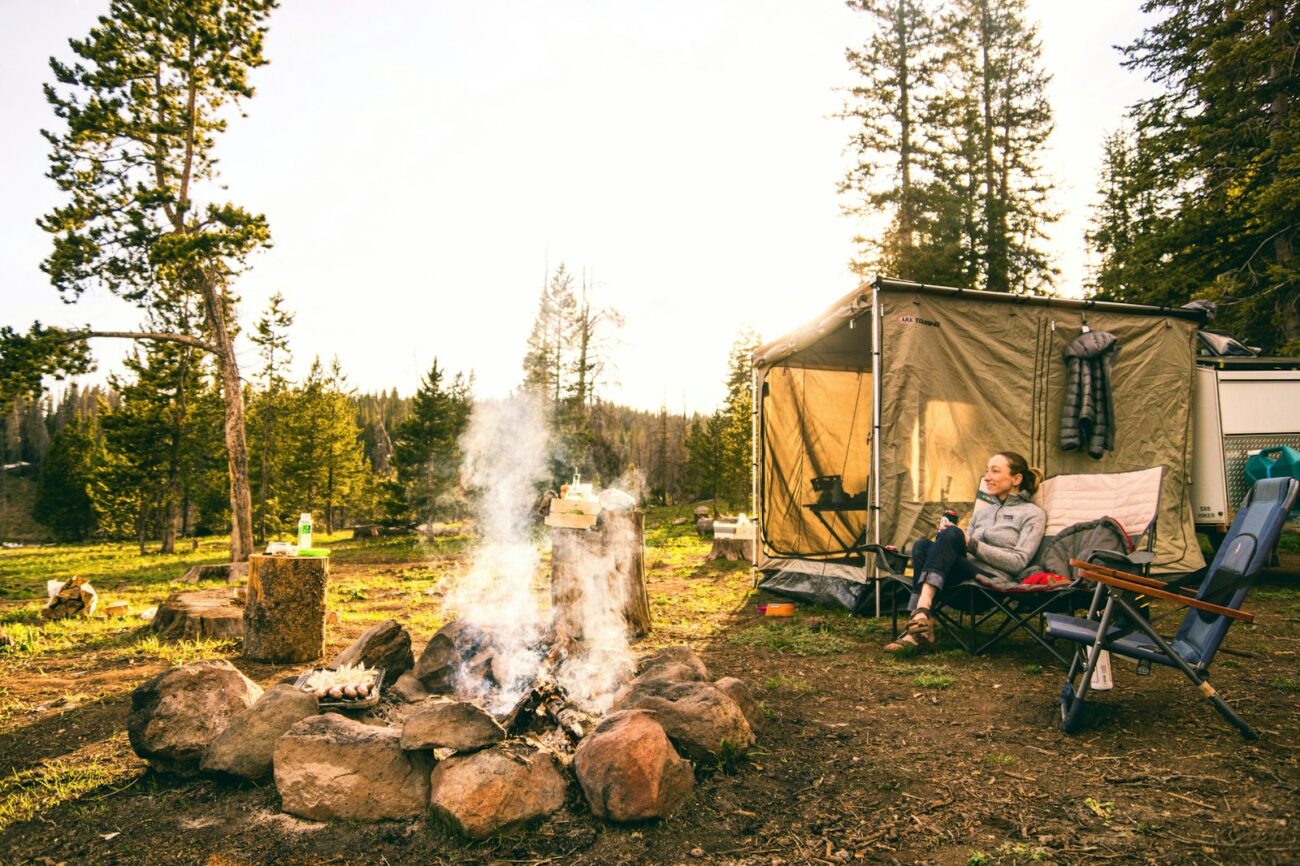The gentle crackle of a campfire, stars twinkling overhead, and the fresh scent of pine in the air – there’s something magical about camping that reconnects us with nature and ourselves. Yet, the difference between a memorable outdoor adventure and a miserable experience often comes down to one crucial element: your campsite. Whether you’re a seasoned backpacker or a weekend warrior setting up your first tent, understanding the essentials of a perfect campsite can transform your outdoor experience.
The ideal campsite balances three critical elements: a strategic location that offers both beauty and practicality, thoughtful comfort features that make roughing it a little less rough, and comprehensive safety measures that keep wildlife encounters as stories rather than emergencies.
The Foundation of a Perfect Campsite: Strategic Location
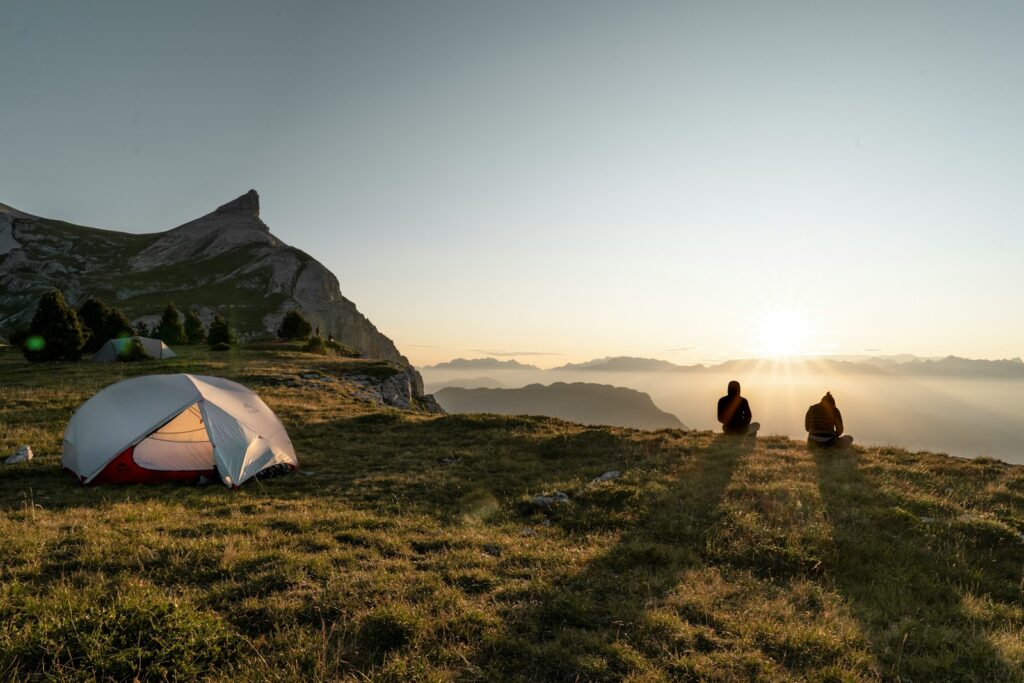
Location serves as the cornerstone of any exceptional camping experience, functioning as both the canvas and frame for your outdoor adventure. The perfect campsite offers proximity to your planned activities—whether hiking trails, fishing spots, or climbing routes—without requiring exhausting travel each day. Topography plays a crucial role too; look for relatively flat ground that’s slightly elevated to prevent flooding during unexpected rain showers. Natural elements like trees provide welcome shade during scorching summer days while acting as windbreaks when evening breezes pick up.
Additionally, a site with a balance of sun and shade throughout the day ensures your tent won’t become an unbearable sauna by mid-morning while still allowing you to dry out gear as needed.
Water Sources: Proximity Without Peril

Access to water fundamentally shapes your camping experience, influencing everything from cooking to cleaning and hydration needs throughout your stay. The ideal campsite sits within a comfortable walking distance of a clean water source—close enough for convenience but not so close that you risk flooding or unwelcome nocturnal wildlife visitors seeking a drink. Environmental stewardship demands camping at least 200 feet (about 70 adult steps) from any water source to protect fragile riparian ecosystems and prevent contamination.
Flowing water sources like streams generally offer safer drinking options than stagnant water, though all natural water should be properly treated before consumption. Remember that the peaceful sound of a babbling brook might seem idyllic during daylight hours, but can become surprisingly loud at night, potentially disrupting your sleep if you’re positioned too close.
Natural Features: Maximizing Views and Protection
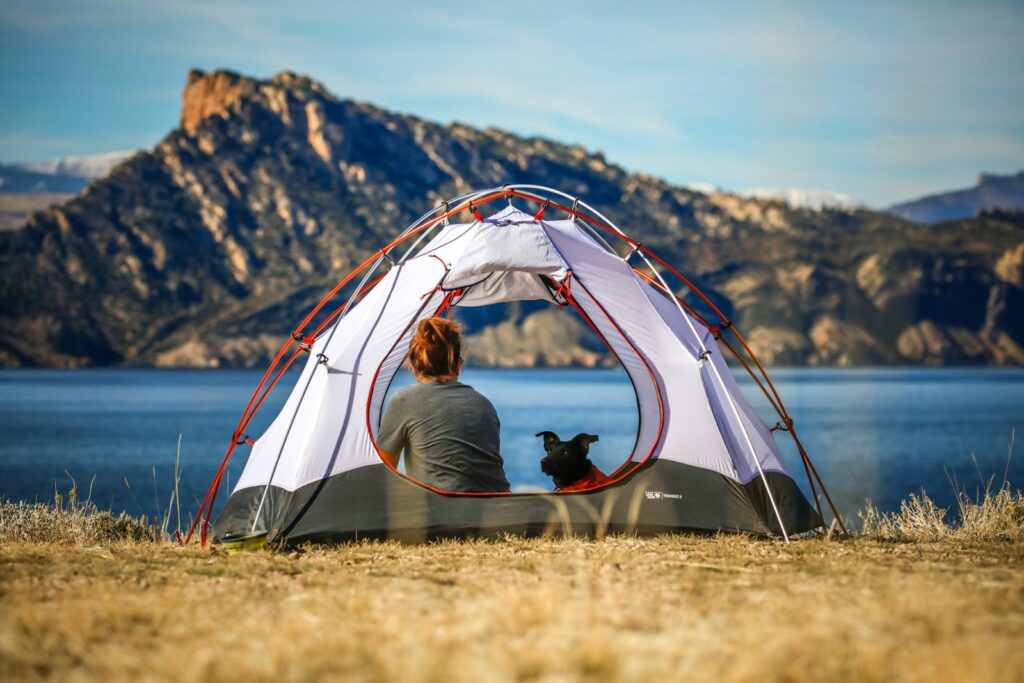
The perfect campsite strikes a masterful balance between breathtaking views and practical protection from the elements, utilizing natural features to enhance your experience. Strategic positioning near distinctive landscape features—a mountaintop vista, riverside location, or alpine meadow—transforms ordinary camping into an extraordinary communion with nature. Trees offer multiple benefits: shade during hot days, wind protection during storms, and natural anchors for tarps or hammocks when needed. Rock formations can serve as natural windbreaks and sometimes provide cooking areas protected from precipitation.
Savvy campers learn to read the landscape, recognizing that while that exposed ridgeline offers spectacular sunset views, it might become dangerously windy or lightning-prone during storms, making slightly lower elevations with partial protection often the wiser choice.
Evaluating Ground Conditions: The Literal Foundation

The ground beneath your tent functions as the literal foundation of your camping comfort, deserving careful inspection before you stake anything down. Ideal terrain features a gentle slope that allows rainwater to drain away rather than pooling beneath your sleeping area, potentially creating a midnight swimming pool experience. Before setting up, remove sharp rocks, sticks, pinecones, and other debris that might puncture your tent floor or create uncomfortable pressure points while sleeping. Soil composition matters significantly—sandy or loamy soil tends to drain well and accepts tent stakes easily, while clay becomes problematic when wet and rocky ground makes securing your shelter challenging.
Experienced campers develop the habit of lying down on their selected spot before setting up, allowing them to identify and address uncomfortable lumps or depressions that might otherwise lead to a restless night.
Creating Comfort: Essential Campsite Amenities
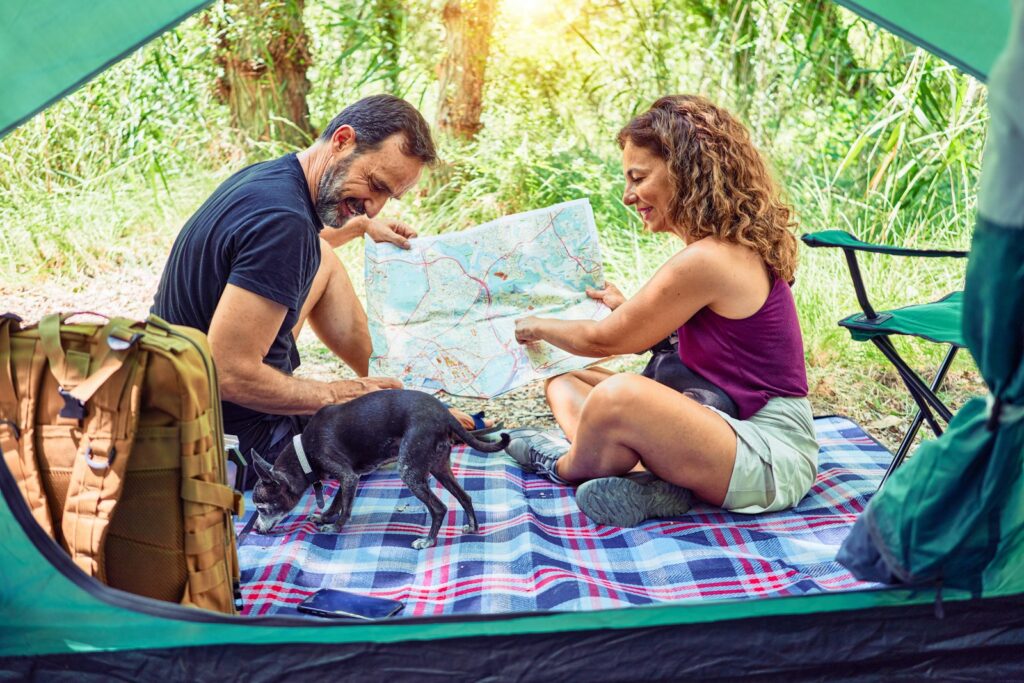
Comfort at a campsite doesn’t require sacrificing the authentic outdoor experience—rather, it means thoughtfully incorporating elements that enhance your connection with nature while addressing basic human needs. A well-designed camping kitchen area positioned separate from your sleeping space maintains food safety while creating a natural gathering place for shared meals and stories. Seating arrangements, whether brought along (camp chairs) or fashioned from logs or rocks, provide welcome relief after active days and encourage longer fireside conversations under starry skies.
Sleeping pad selection deserves particular attention, as this single item often determines sleep quality more than any other factor; modern options range from ultralight foam to luxurious inflatable models that rival home mattresses. Strategic organization systems—designated areas for gear storage, cooking, cleaning, and waste management—transform a chaotic collection of equipment into a functional temporary home that feels genuinely comfortable rather than merely endurable.
Sleeping Arrangements: Engineering Restful Nights
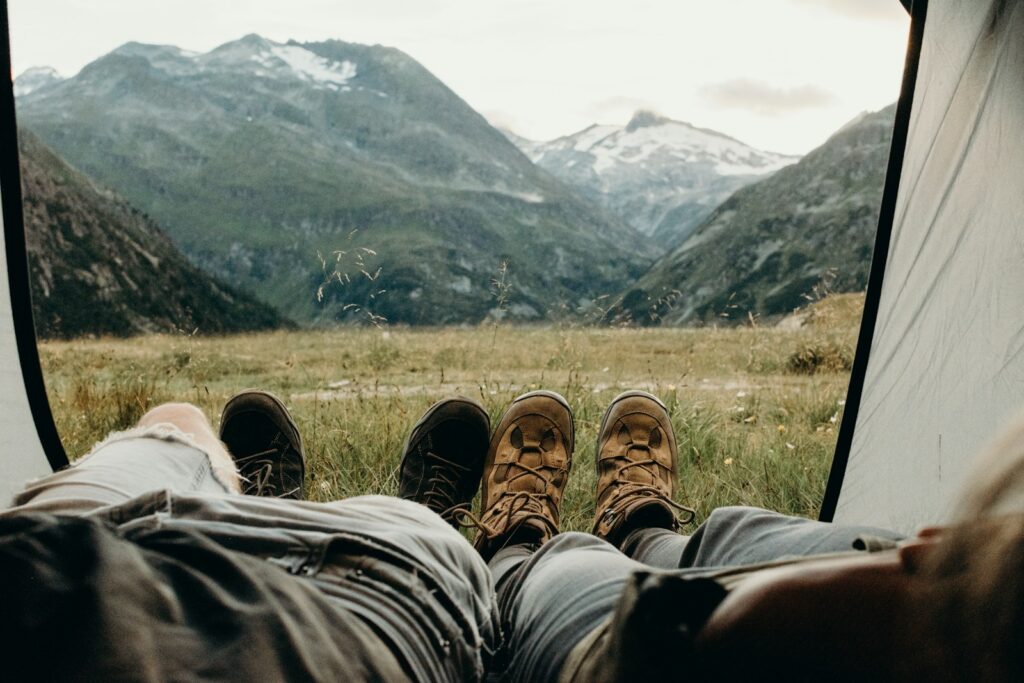
Quality sleep forms the cornerstone of enjoyable camping, transforming your energy levels and mood throughout the adventure. The ideal tent placement involves positioning the doorway away from prevailing winds and angling it to catch morning warmth while avoiding the harsh midday sun. Creating a level sleeping platform, even if it requires minor terrain modifications, prevents the frustrating midnight slide to the tent’s lowest point that plagues inexperienced campers. Temperature regulation demands particular attention—a sleeping system (bag, pad, and optional liners) rated appropriately for your environment prevents both sweaty discomfort and dangerous chills.
Noise considerations also influence sleep quality; position your tent away from high-traffic paths, communal areas in established campgrounds, and noisy natural features like certain waterfalls that might initially seem soothing but become sleep-disrupting after hours of continuous sound.
Cooking and Food Storage: Balancing Convenience and Safety
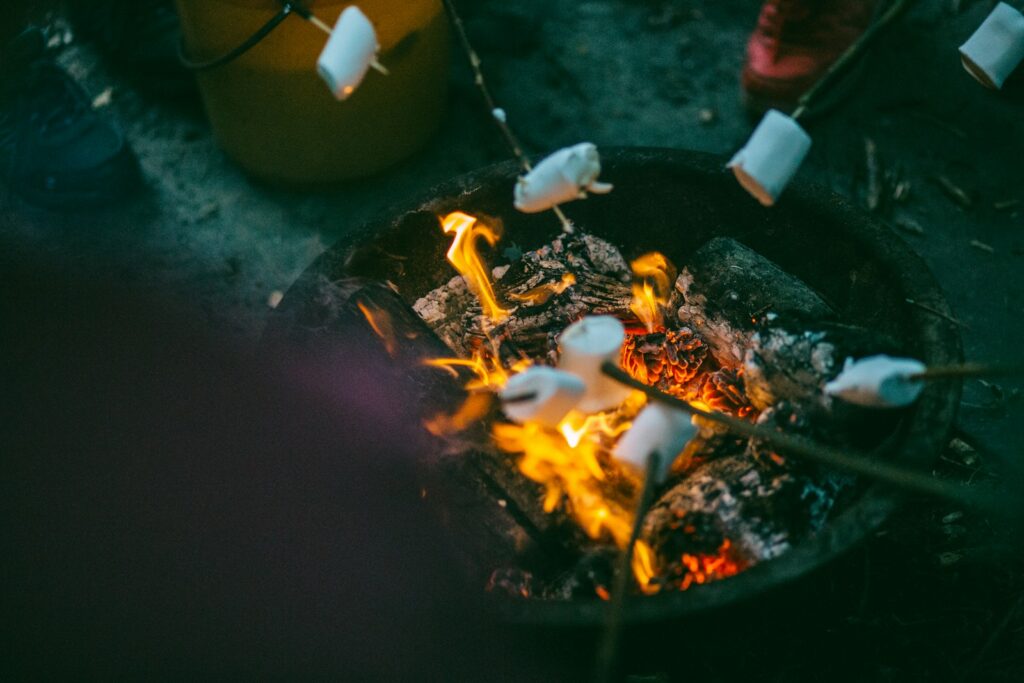
A well-designed cooking area transforms camp meals from basic sustenance into memorable culinary experiences while maintaining crucial safety standards. Establish your kitchen at least 100 feet from your sleeping area to minimize food odors near your tent, reducing wildlife attraction where you rest. Proper food storage using bear canisters, bear bags hung correctly, or provided food lockers (in some campgrounds) prevents potentially dangerous wildlife encounters and protects both animals and future campers. A cooking surface positioned at comfortable height—whether a brought-along camp table or flat rock—reduces back strain during meal preparation and cleanup tasks.
Wind protection for your stove improves fuel efficiency dramatically; many experienced campers create simple windbreaks using natural features, equipment positioning, or purpose-built screens that make cooking possible even in challenging conditions.
Safety First: Assessing and Mitigating Campsite Hazards

Safety assessment begins before you unpack a single piece of gear, requiring a thorough evaluation of both obvious and subtle hazards that could impact your camping experience. Overhead dangers demand immediate attention—dead trees or branches (aptly named “widowmakers”) can fall without warning, particularly during wind or storms, making areas beneath them absolutely unsuitable for camping. Terrain evaluation should identify potential flash flood zones, including dry washes that can transform into raging rivers during distant rainstorms you might not even witness. Animal evidence including scat, tracks, claw marks on trees, or heavily used game trails suggests regular wildlife activity that might necessitate enhanced food storage protocols or selecting an alternate location.
Weather vulnerability assessment—considering how your chosen site might fare during high winds, lightning storms, or heavy precipitation—allows you to prepare appropriate contingency plans or select more sheltered alternatives when conditions warrant.
Wildlife Considerations: Coexisting Respectfully

A perfect campsite facilitates respectful coexistence with wildlife through thoughtful planning and proper practices. Research local wildlife before your trip, understanding which animals frequent your destination and any special precautions they might necessitate beyond standard protocols. Food management extends beyond meals to include scented items like toothpaste, deodorant, and medications that curious creatures might investigate, requiring appropriate storage in your food protection system. Properly managing gray water (from dishwashing, handwashing, etc.) by straining food particles and dispersing water at least 200 feet from camp prevents attracting animals with food residues.
Noise discipline—maintaining reasonable volume levels and avoiding startling sounds—reduces stress on wildlife and increases your chances of meaningful observation opportunities rather than simply scaring animals away.
Weather Protection: Preparing for Nature’s Moods

Weather dramatically impacts camping comfort and safety, making strategic site selection and preparation essential for enjoyable experiences regardless of conditions. Natural windbreaks—stands of trees, large boulders, or terrain features—provide crucial protection during gusty conditions that might otherwise damage equipment or create dangerous wind-chill factors. Drainage patterns deserve careful attention; even moderate rainfall can create significant water flow that might undermine tent stakes or create uncomfortable puddles beneath your shelter. Sun exposure management becomes critical in both cold environments (where morning sun provides welcome warming) and hot climates (where afternoon shade prevents tent overheating).
Seasonal considerations should influence your site selection; summer camping benefits from afternoon shade and cooling breezes, while shoulder-season trips might prioritize protection from precipitation and wind while maximizing solar warming opportunities.
Fire Safety and Management: Responsible Enjoyment
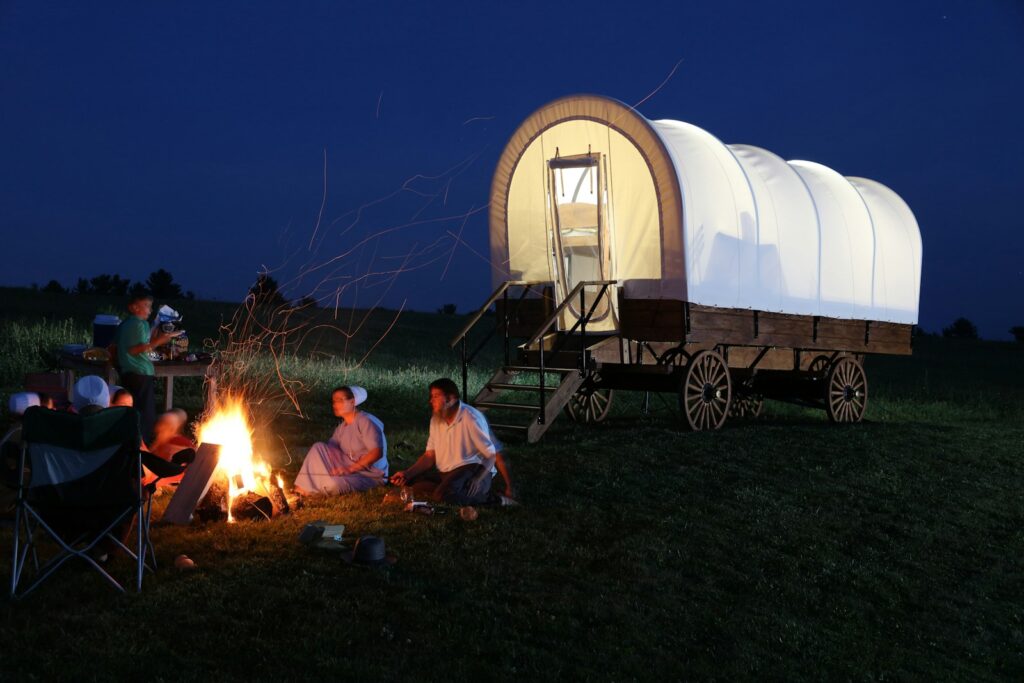
Campfires represent both the iconic heart of camping tradition and a significant responsibility requiring careful management. Site selection for fire pits must consider overhead clearance from branches, proximity to flammable ground materials like dry grass or pine needles, and established fire regulations for your specific location. Proper construction includes clearing a generous area around your fire pit, removing all flammable materials, and building an appropriate containment system using a metal fire ring, rock circle, or designated fire pit. Responsible fire management means maintaining a reasonable size fire that you can control, never leaving it unattended, and having appropriate extinguishing materials (water and shovel) immediately available.
Complete extinguishment—dousing thoroughly with water, stirring to expose all embers, and repeating until cool to the touch—represents the non-negotiable final step before departing or sleeping, regardless of how well-contained your fire appears.
Emergency Preparedness: Planning for the Unexpected

The perfect campsite incorporates emergency preparedness into its fundamental design, anticipating potential problems before they arise. Accessibility considerations include understanding exactly how emergency services could reach your location if needed and maintaining clear evacuation routes in multiple directions. Communication planning requires knowing where reliable cell service exists (often at higher elevations) or carrying alternative communication devices like satellite messengers in truly remote areas. Weather monitoring systems—whether technology-based through weather radios or traditional knowledge of reading clouds, wind patterns, and barometric pressure—provide crucial advance warning of approaching hazards.
A site-specific emergency plan, shared with all group members, establishes clear procedures for common scenarios including injury, severe weather, wildlife encounters, or fire, transforming potential chaos into coordinated response during stressful situations.
Sustainability and Leave No Trace: Preserving Perfect Campsites

The truly perfect campsite exists in ecological harmony, leaving minimal evidence of human presence after departure. Durable surfaces—established campsites, rock, gravel, dry grass, or snow—should be prioritized over fragile vegetation that might be permanently damaged by your tent footprint. Waste management follows strict Leave No Trace principles: packing out all trash (including tiny items like twist ties or fruit peels), properly disposing of human waste through catholes or carried waste systems, and managing dishwater by straining food particles and dispersing water widely. Minimal-impact fire practices include using established fire rings when fires are permitted, collecting only downed wood of appropriate size, and ensuring complete extinguishment.
Perhaps most importantly, perfect campsites often remain undisclosed in public forums and social media, preventing overuse of sensitive areas while encouraging others to develop the skills to discover their own perfect locations rather than simply following coordinates.
Conclusion
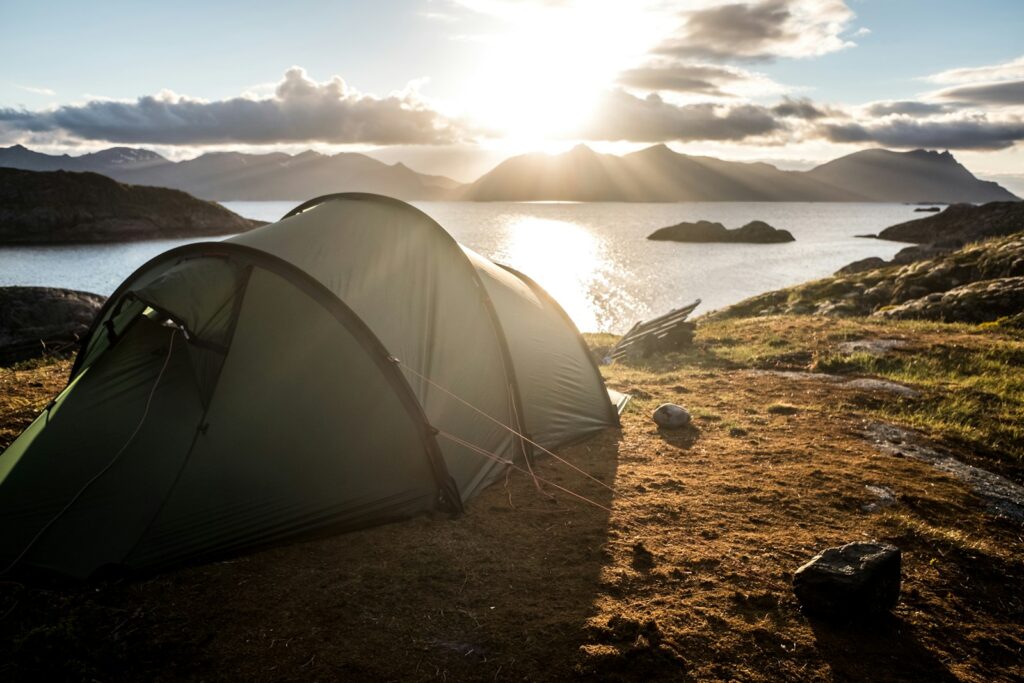
The perfect campsite emerges at the intersection of thoughtful location selection, intentional comfort creation, and comprehensive safety practices. Rather than viewing these elements as separate considerations, experienced outdoor enthusiasts recognize their interconnected nature—how a location’s natural features can enhance both comfort and safety, how comfort elements like proper sleep contribute to safer decision-making, and how safety practices preserve the pristine environments that draw us outdoors initially. By developing your campsite selection skills through experience and knowledge-sharing, you transform each outdoor adventure from merely sleeping outside into creating a temporary home that connects you deeply with natural spaces.
The reward extends beyond personal enjoyment to the satisfaction of knowing your careful practices help preserve these perfect campsites for fellow adventurers and future generations, maintaining the delicate balance between accessible wilderness experiences and environmental protection.

